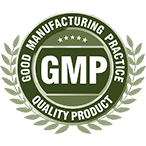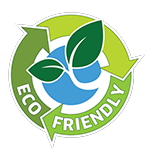Absorbent Materials
Absorbent materials are used to safely and effectively clean up oil and chemical spills and help protect the environment and human health by removing spills from the surface.
Absorbent Materials
Absorbent materials are specialized materials used to quickly and effectively absorb liquids. These types of materials are commonly used for cleaning up and containing oil, chemical liquids, and other spillages. Absorbent materials are widely preferred in industrial facilities, laboratories, hospitals, workshops, and environmental cleanup operations.
Absorbent Material Types
Oil absorbents and chemical absorbents can be made from a variety of materials and in a variety of shapes. The most common absorbent materials are:
- Absorbent Granule: Absorbent bio granule is a natural absorbent material used to absorb oil and chemical spills. It is produced from vegetable fibers and is an environmentally friendly product.
- Absorbent Particulate: Oil absorbent particle are small, dried pieces used to absorb oil and chemical spills. It is usually produced from cellulose, zeolite or synthetic materials.
- Absorbent Pillows: An oil absorbent pad is a thick absorbent material used to absorb oil and chemical spills. It is usually produced from paper, cotton or synthetic materials.
- Bilge Socks: Bilge absorbent is an absorbent material used to absorb oil and chemical spills from the bilge on ships. It is usually produced from paper, cotton or synthetic materials.
- Absorbent Socks: An oil absorbent swab is a long, cylindrical absorbent material used to absorb oil and chemical spills. It is usually produced from paper, cotton or synthetic materials.
- Oil Absorbent Boom: An oil absorbent sausage is a long, cylindrical absorbent material used to absorb oil and chemical spills. It is usually produced from paper, cotton or synthetic materials.
- Oil Absorbent Roll: An oil absorbent roll is a long, cylindrical absorbent material used to absorb oil and chemical spills. It is usually produced from paper, cotton or synthetic materials.
- Oil Absorbent Pad: An oil absorbent pad is a thick absorbent material used to absorb oil and chemical spills. It is usually produced from paper, cotton or synthetic materials.
- Chemical Absorbent Pillow: A chemical absorbent pad is a thick absorbent material used to absorb oil and chemical spills. It is usually produced from paper, cotton or synthetic materials.
- Chemical Absorbent Sock: A chemical absorbent swab is a long, cylindrical absorbent material used to absorb oil and chemical spills. It is usually produced from paper, cotton or synthetic materials.
- Chemical Absorbent Boom: A chemical absorbent sausage is a long, cylindrical absorbent material used to absorb oil and chemical spills. It is usually produced from paper, cotton or synthetic materials.
- Chemical Absorbent Roll: A chemical absorbent roll is a long, cylindrical absorbent material used to absorb oil and chemical spills. It is usually produced from paper, cotton or synthetic materials.
- Chemical Absorbent Pad: A chemical absorbent pad is a thick absorbent material used to absorb oil and chemical spills. It is usually produced from paper, cotton or synthetic materials.
Features and Functions of Absorbent Materials
-
Absorption Capacity:
- Absorbent materials can absorb several times their own volume of liquid. This feature allows for the rapid absorption of large amounts of liquid.
-
Variety:
- Different types of absorbent materials are designed to absorb different liquids. For example, some are suitable for oil-based liquids, while others are more effective for chemical liquids or water.
-
Applications:
- Industrial Facilities: Used to clean oil and chemical spills and ensure safety in workplaces.
- Environmental Cleaning: Used in cleaning up spillages resulting from natural disasters or accidents.
-
Environmental Safety:
- Absorbent materials play a significant role in preventing spilled liquids from harming the environment and reducing environmental pollution.
-
Ease of Use and Waste Management:
- The use of absorbent materials is generally straightforward and provides effective waste management. After use, these materials can be safely disposed of or recycled if necessary.
Application and Sustainability
- Effective use of absorbent materials requires the selection and application of the right material.
- These materials are important for increasing safety in workplaces and providing rapid response in environmental disasters.
- Sustainable practices contribute to reducing environmental impacts and preserving natural resources.
Absorbent materials are critically important for the quick and effective management of liquid spillages. They are widely used in various industrial and environmental applications for cleaning and containing liquid leaks.
Read More


